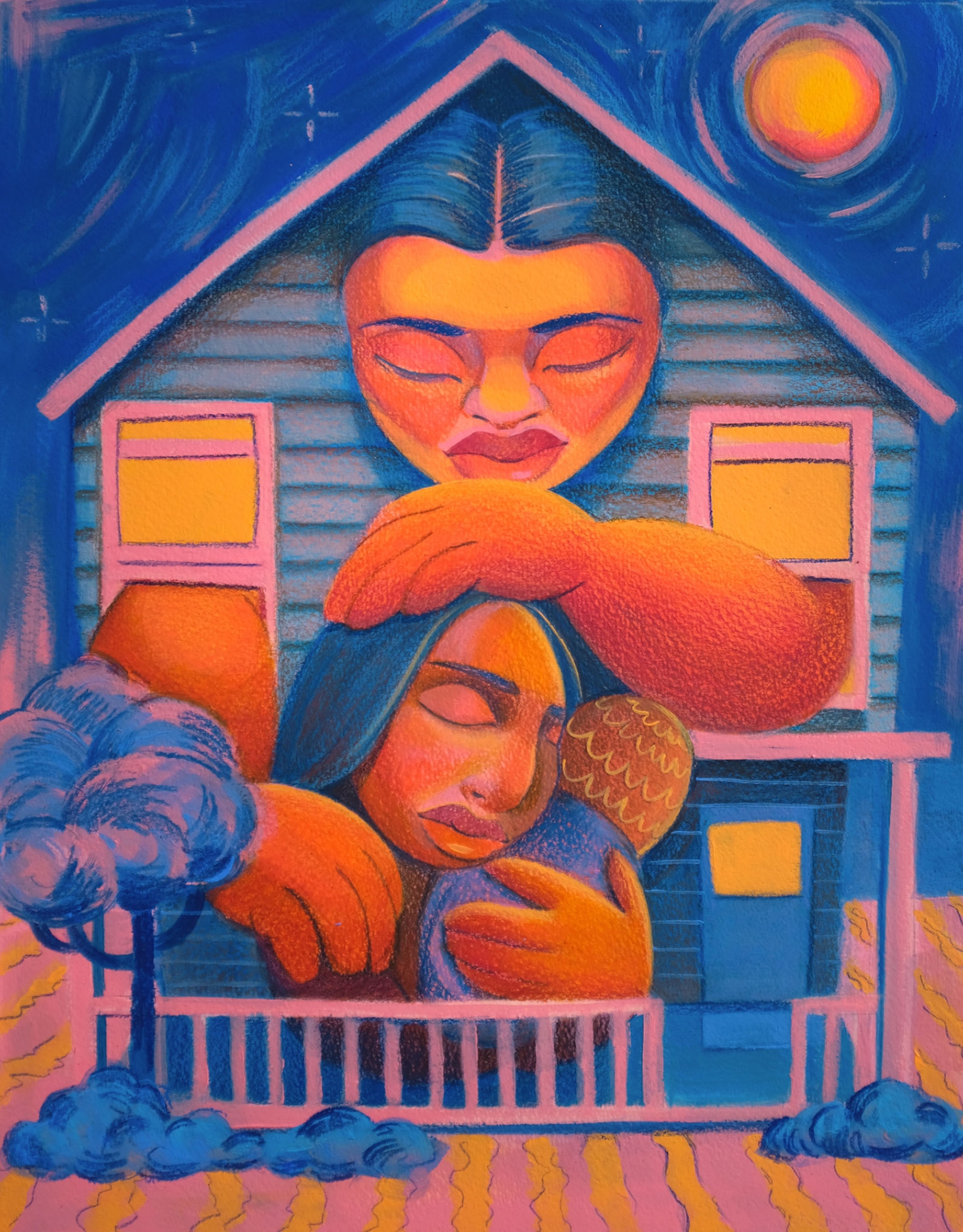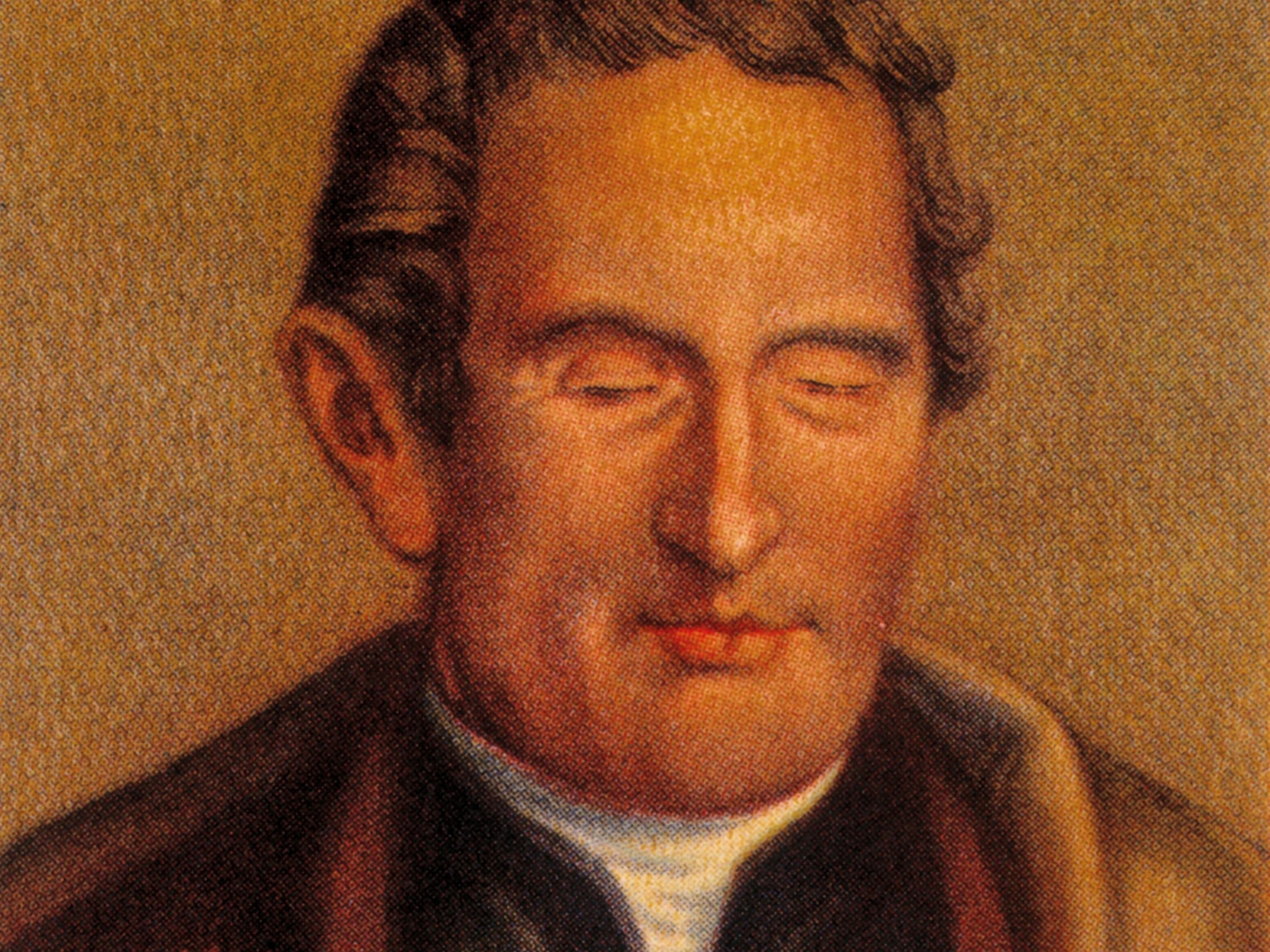How the U.S. Midwest is Latin American
Moving to Ohio, a professor and author unexpectedly finds the familiar: big extended families with ties to the land, to neighbors, to home.

I was ordering a burger in Cincinnati the first time I began to sense that the Midwest was somehow familiar to me, which is to say that the Midwest was somehow Latin American.
(The Surprising Origin of the Phrase 'Flyover Country')
It was a Saturday afternoon, pre-COVID, and people crowded the tables at Zip’s Cafe, a small restaurant whose interior was as dark as it probably had been the first time its doors opened in the 1920s. The waitress wanted to know if someone would be joining me. No, I said, slightly annoyed because I had grown up with a mother and three aunties, all from Colombia, who did not believe that anyone, let alone a woman, should do anything alone.
The waitress did not notice my sigh. Distracted with full tables, she took my order and moved on—and for some reason, perhaps since I was alone and thinking of my mother, it seemed that when the waitress walked away, a curtain parted before me. The classic burger joint came into focus. There were probably fewer than two dozen tables, and every seat was occupied not with friends or drinking buddies but with families. Teenagers bantered with grandparents, and a boy barely out of diapers lunged for a plate of french fries. At one table, a mother measured out a few ounces of soda for a child while talking with a woman who appeared to be her mother. At the tables, in other words, were intergenerational families—something I usually see in the United States only in immigrant communities.
The image of flight is so dominant that I had forgotten its opposite: People stay in the Midwest. They value having their grandparents close by, the cousins down the block or across town.
I remember how a friend raised in southwestern Ohio once described her childhood: surrounded by cousins and aunts and grandparents, in a close-knit tribe of Black folks who loved, and frequently gathered at, the large tract of land on which her great-great-grandparents had built the family home.
As I listened to her, I almost said, It sounds like you grew up Latino. But I held my tongue, as I had moved only recently to the Midwest for a university teaching job and knew nothing of the region.
My immigrant family had never lived west of the Hackensack River in northern New Jersey. They had embarked upon one enormous migration in the 1960s and ’70s—my mother and three aunties from Colombia, my father from Cuba, an uncle from Peru—and upon arrival in the Garden State, they stopped. For them, the map of the United States ended just beyond where we lived. They never ventured into the Midwest, because every penny went toward the mortgage. And when my parents moved in their 60s to South Florida, they again settled in a working-class, mostly Spanish-speaking neighborhood.
When I ended up in Ohio, then, I began reporting on the Midwest, for my parents, my aunties—myself. I would tell my mother how my white students grew up in small towns here that once revolved around agriculture, and although none of the relatives now worked on farms, the families stayed: three generations, sometimes more, within a few blocks of one another, and church together every Sunday.
The same was true for my Black neighbors. They had been here for generations. One grandfather came to mow the lawn every week and see his grandchildren. The youngsters who flocked to multiple houses on our street were not friends but cousins. As one mother explained to me, “My sister and I take turns. I get all of them this weekend, so she gets a break.”
My neighbor hauled her children to barbecues and my students wrote about their hometowns, and I remembered my own extended Latinx family in Jersey and how none of us left the house alone. We had one car, and into it we packed everyone: my sister and me, the aunties, the uncles, and if my abuela had been in the States, she would have been squeezed in too. We descended on local parks and house parties, one tiny tornado of a family, the Spanish bursting around us. Like my students and my neighbors’ children, I spent summers playing tag, inventing stories, and listening to the women gossip. Our lives were insular, the kind of lives easily mocked in independent films and comedy skits, but they were family oriented.
Students often ask me how to write about home without hurting anyone. I take comfort in knowing that one day they will be able to write with more ease.
This deep attachment to family in the Midwest surprised me, because by the time I moved here, I knew that the picture of the region offered in headlines was one of departures. People have been fleeing small towns in this part of the country for decades, seeking the jobs and connections large cities can offer.
The image of flight is so dominant that I had forgotten its opposite: People stay in the Midwest. They value having their grandparents close by, the cousins down the block or across town, the old high school friends nearby. They have a relationship with the land and small towns and each other that is complicated and that those of us who are outsiders fail to appreciate. It is a region of the country experiencing another change now that the COVID-19 pandemic has brought back some of those who once left, as well as those who want to escape city life with all its proximities.
Maybe it is this tension—the departures, the returns, the decision to stay, a constant reference to migration—that also makes the Midwest familiar to me. My students are acutely aware of what the region offers them and how it fails them. It’s the same way that my parents and their immigrant friends talk about Latin America. No one ever wanted to leave home. There were always stories about the brother who chose to stay in Colombia, the cousin who didn’t get out of Cuba in time. And there was always talk about work. They left for work. They came for work. Now I read those stories, but they’re from my students about Ohio, Michigan, and Wisconsin.
In the creative nonfiction classes I teach, students writing about home often pen essays about small towns that were promised bright futures when oil and gas companies arrived with jobs in fracking. A decade later, people in the Ohio Valley have seen jobs, incomes, and even population numbers drop, but the students do not write about statistics. They tell of how fracking changed the color of the skies. They write about fathers who toil in warehouses. One undergrad penned an entire essay about the parking lot in her hometown, where even people in their 20s congregate at all hours of the day because the town can make no other promises at the moment.
Excerpts from essays by students in Daisy Hernández’s graduate creative nonfiction classes
The hillside garden of my grandparents’ house grows food for canning, food for the deer they named Garcia, food to eat right out of the dirt after a drink from the hose. He sprays the seeds three times, kicks earth over with the side of a boot, points his eyes up to the sky and watches thick black clouds suffocate the sun, says something about getting in early and now the day is wasted or something similar, but I don’t remember and he didn’t clarify beyond a paint stick stuck in the mud to mark where he stopped planting. —Madison Krob
One bright afternoon when I was in elementary school, my mom and I drove from our trailer park down to the Save A Lot discount grocery store with two soup cans in a plastic bag. At the service desk, my mom told the woman wearing the red uniform vest, “I bought these soups here last week. See?” She pulled the cans, now empty, out of the bag and set them on the counter. “They’re labeled VEGETABLE SOUP. But I opened one and it wasn’t vegetable at all. It’s something different, I couldn’t tell what. I tried the other can and it was the same.”
We came for a refund on two 50-cent cans of generic soup. She had the receipt, but this was the only store in town selling brandless soup like this. They gave us our money back, and we bought more soup. That money wasn’t going to pay the lot rent, but it did cover two solid meals.
When one bad thing happens to poor people, more is always on the way. —Amy Bailey
As a child among Latin American families, I often would hear women slip references to tragedies into the folds of their stories, and the same happens with my students. A murder at a local hotel, a murder in their family—both are tucked into a phrase or two in a longer essay. Sometimes students mention the Great Recession: job losses for their parents and college savings wiped out. One student alludes to a glass pipe; most, however, say nothing about the meth epidemic sweeping the region. The one time a student braved an essay about discovering his mother’s drug addiction, the students rallied around him, and in a secret ballot whose results only I saw, they voted his essay the best one of the semester.
I make a point of teaching the works of LGBTQ writers, in part because being queer in the Midwest is a little like being queer in a Latinx family. It’s hard. My heart tugs in a particular way when a student comes out to me or when they tell me they want to come out to their families. In my early 20s, I hopped on public transit and an hour later disembarked in New York City with its lesbian bars and gay bookstores. My LGBTQ students don’t have that. They have each other and their close-knit families and communities. So my initial questions are always about exile. Will you get kicked out? Do you need a place to stay? Who is your support circle?
Students, both straight and queer, often ask me, in their own way, how to write about home without hurting anyone. “I feel so guilty,” they confess in reflections on writing about family and the Midwest.
I turn to the Ohio writer Toni Morrison, who said she wrote her first novel because it was the book she wanted to read. I tell my students: You have to write what you want to read. But often they look at me in a daze, measuring the weight of their wants against those of their families and their hometowns. I urge them to at least write a secret draft, and I take comfort in knowing that one day they will be able to write with more ease. I have no doubt they will write about this place, about home, in much the same way that I keep writing about mine.
This story appears in the June 2022 issue of National Geographic magazine.








